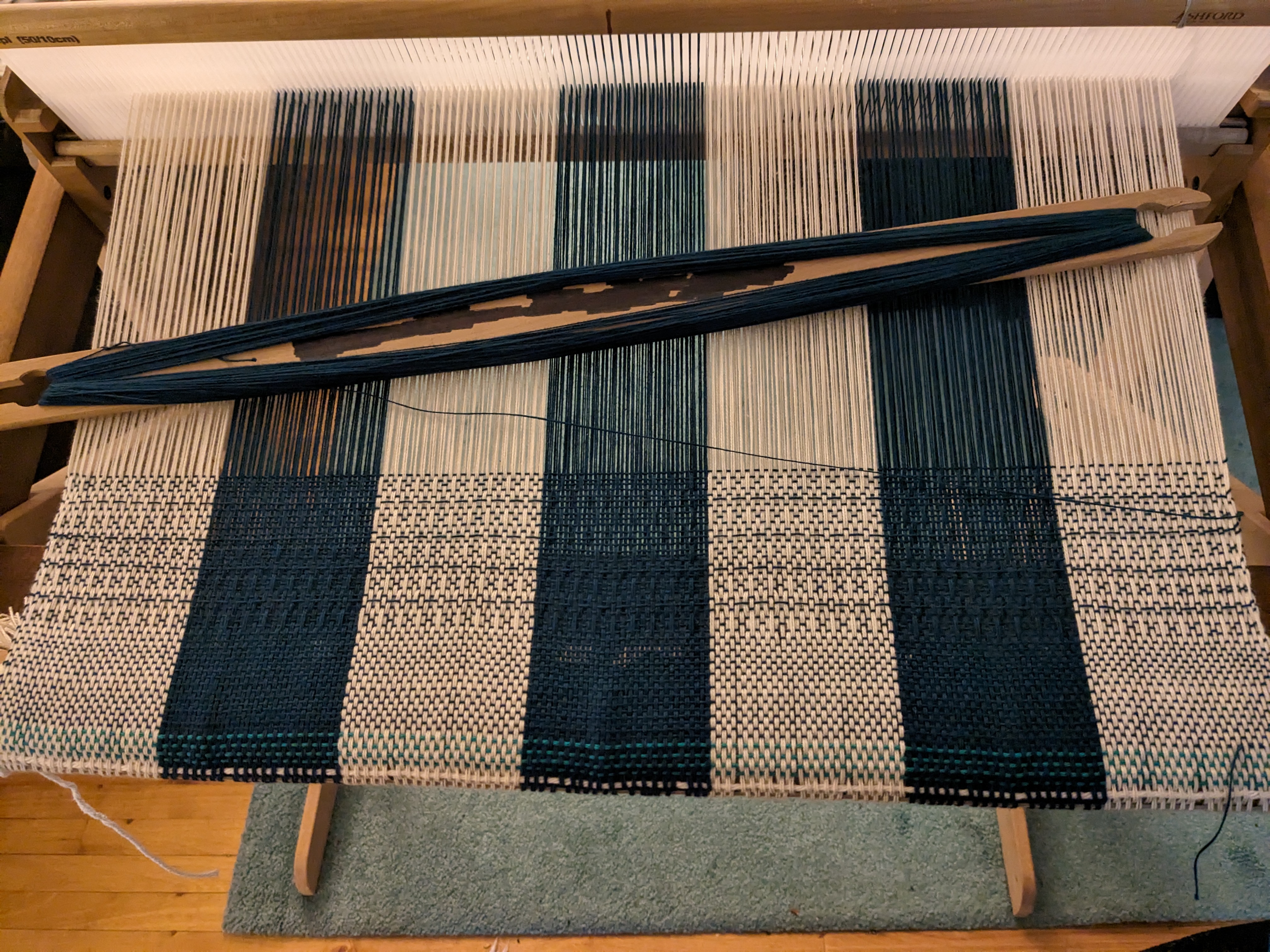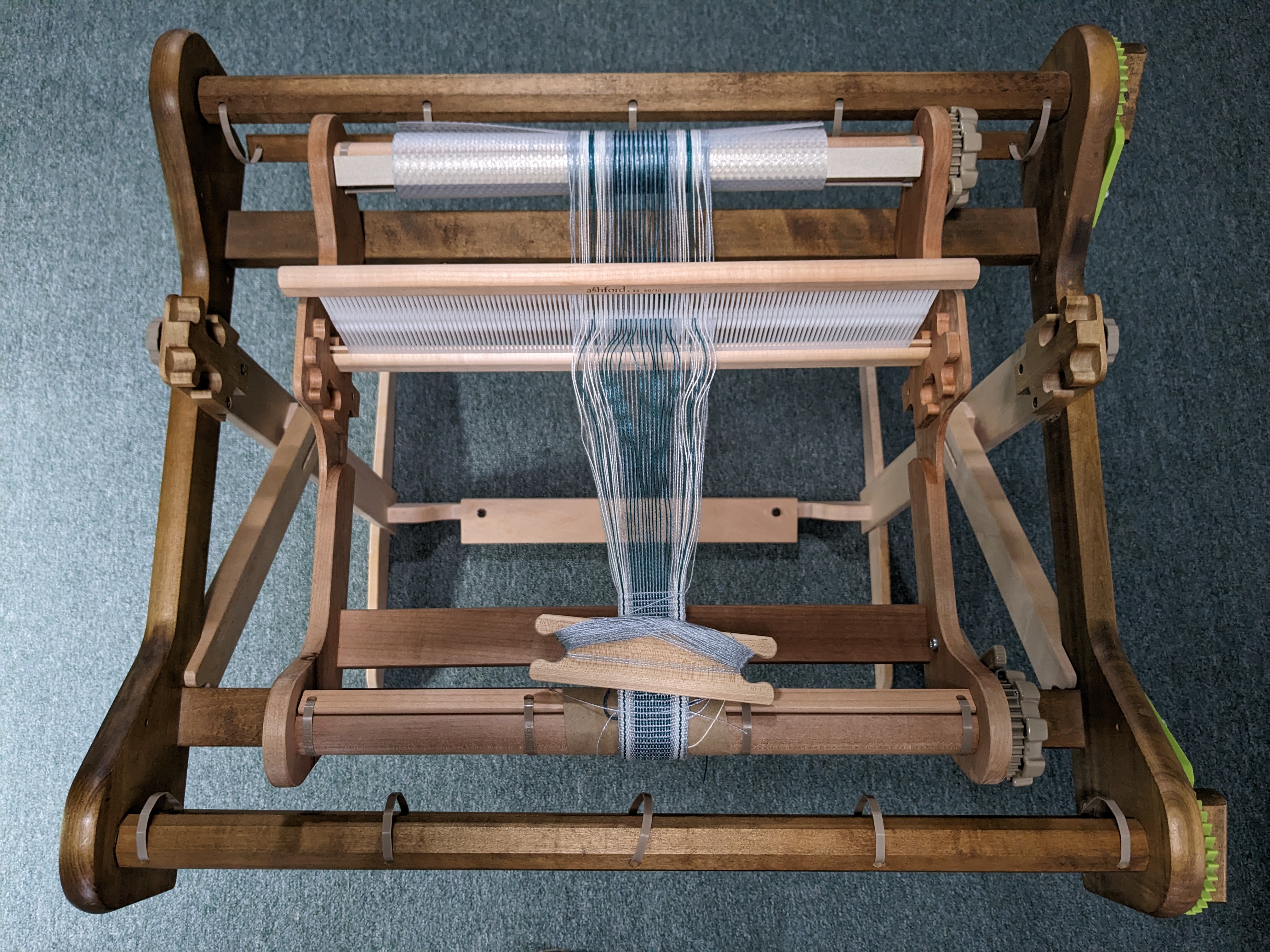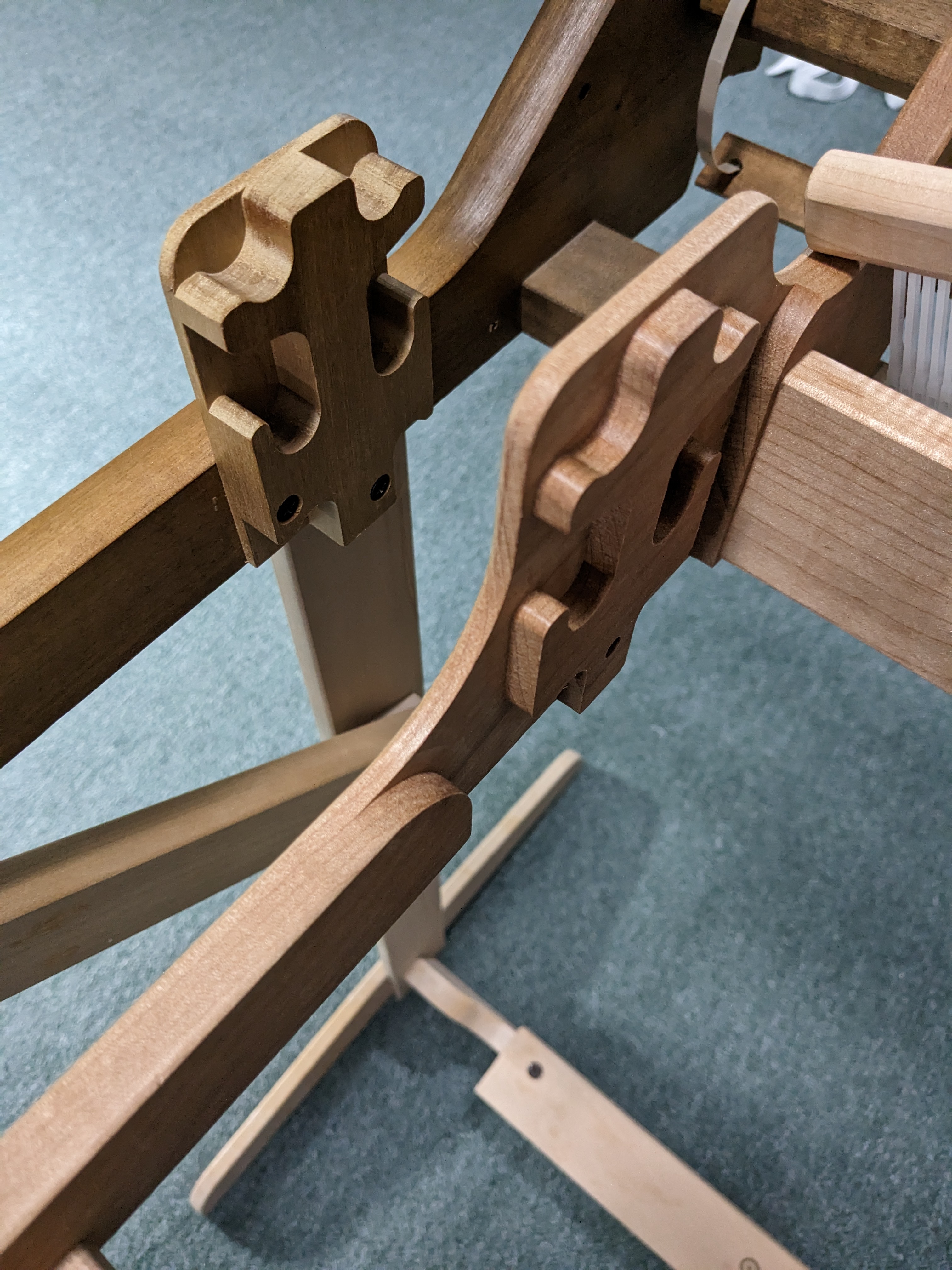I got a new loom! First impressions of the 24" Ashford Rigid Heddle vs. 16" Sample-It
equipmentI’ve had my little Sample-It since March 2021 and have woven many projects on it, but, of course, it’s “just” 16” and there are some projects that need a bigger loom. So after close to 2 years I’ve picked up a bigger loom, a 24” Ashford Rigid Heddle Loom.
I found a listing for a used 24” Ashford Rigid Heddle (hereafter referred to as the RHL) with a bunch of extra heddles and a stand, at the same time as I had birthday money burning a hole in my pocket. The loom is a pre-2012 design - the most notable difference with the current model is the ratchet and pawl on the handles, also it doesn't have the holes in it to use it as a warping board. The stand is the current design - given the age of the loom I was hoping it was the older one with shelves but it wasn’t a major consideration!
Here’s my first impressions of the loom - I’ve had it for just under a week now, and I’ve woven a few inches on my first project, a set of 20” wide towels with 8/2 cotton and a pick up pattern.

- It’s big! I see why many people find 24” about as big as they want to go with a rigid heddle loom. When I got it home and put it on my table I took out a measuring tape to see if it was really a 32” because it seemed so much bigger (it’s not 🙂).

-
Winding a 22” stick shuttle is noticeably more awkward than the 18” that came with my Sample-It. I haven’t noticed a big difference between smaller shuttles, but that difference somehow seemed more significant. Maybe it’s that I have to hold it a little differently to not hit my knees? I can only imagine that this would be even more so with something bigger!
-
One thing I’m on the lookout for is if it makes working with less stretchy yarns any easier. I’ve seen a couple comments that the longer looms are better for this because of the geometry. I still have some issues with the slot yarns being a bit loose so it hasn’t made a big difference there.
-
I definitely find it more awkward to advance with having to reach further. The older ratchet and pawl design is a bit easier to undo, but also easier to unwind too much. I haven’t woven enough to get a feel for if I’m advancing much less often.
-
I’m still working on finding comfortable spot for weaving on this one. I use the Sample-It either on my lap on the couch, or on my dining room table. Sitting on the couch with the stand felt too low. I did threading with a wheeled office chair which worked well, and I was weaving on a bench that we have for our dining room table for a bit, though my back was getting a bit tired after a while.
-
16” Sample it is super easy to carry around the house. 24” isn’t too bad, and I’m also carting it around on the stand, but I may end up finding one spot for it and not moving it around as much. Bigger than that you’d have to think more about what angle you’re holding it at going around corners and through doors etc. particularly if your home pre-dates modern accessibility codes with wider doors. But the Sample-It is definitely the one I'll take to a craft night or any sort of workshop unless I specifically need the size!
-
I still need to work out a better way to carry the loom on the stand. The cross brace on the loom is the easiest thing to hold, but then I need to be sure the knobs are done up very tight or else it will come off the stand.
-
It’s definitely sturdier! The wood is much thicker than the Sample-It, especially in the heddle block area where the Sample-It is quite thin. Because of this and the fact that the heddle blocks are screwed onto the frame rather than carved in, the 16” RHL is about 1.5” wider on the outside than the 16” Sample-It. Of course the Sample-It is lighter weight, every design decision has it's trade-offs!

- I’d seen a trick of connecting the apron bar to the heddle with elastic bands to help when warping. I tried this one time on my Sample-It but didn’t find it helped anything. Not sure if it’s the bigger size or the plastic ties being less stiff due to age and use but I found it was flopping around a lot more and found the bands really helpful.
I look forward to being able to do some bigger projects! I have been eyeing making a ruana type garment for a while but the idea of doing it as 4 panels on the 16” seemed very daunting. But I think my Sample-It will still get lots of use! I'll write up another post once I've done a few more projects on it including some double heddle ones.
Check out Not So Rigid Designer, the online weaving software for rigid heddle loom weavers!
